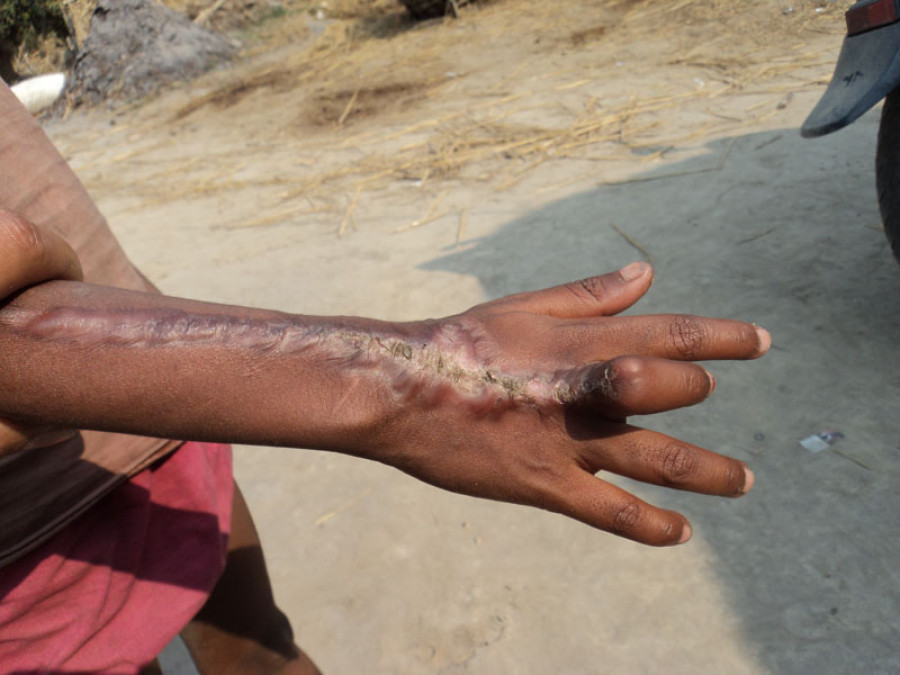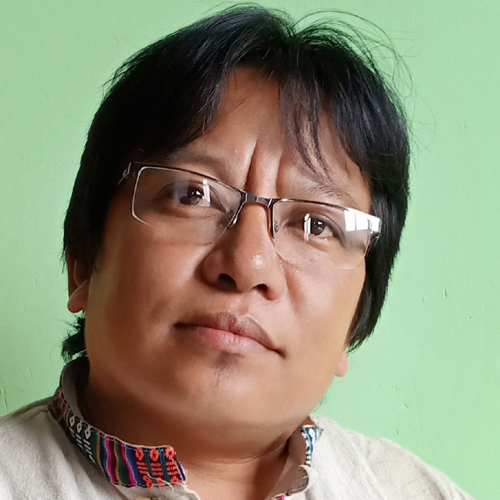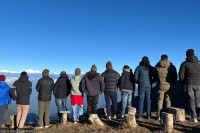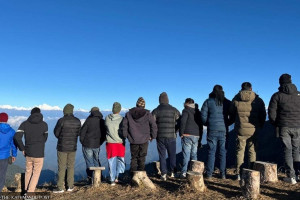Koshi Province
Hospitals in hills reel under lack of anti-snake venom serum and manpower
Rising temperatures and pollution have led to an increase in the number of snake encounters in villages in the hilly areas.
Kumbharaj Rai & Dambar Singh Rai
Manebhanjyang Rural Municipality-6 local Sabina Rai, 15, was bitten by a snake while she was sleeping in her house on Monday.
Rai’s residence is 50 kilometres away from Katari Hospital in Udayapur. Her condition is now stable.
Last week, another local of Manebhanjyang-8, Hastamaya Rai, also suffered a snakebite while she was collecting fodder. She was bitten by a green pit viper.
Hastamaya received treatment at her home for two days, but neither her health improved nor did the pain subside. She was then admitted to the Katari Hospital on July 27. She was discharged after three days of treatment at the hospital.
"As treatment in and around the district seemed unfeasible, we were advised to take her to a snake bite treatment facility," Hastamaya’s relative Kisan Rai said. "We took her to Katari after learning that her treatment was possible there."
From mid-June to July, four cases of snake bites were reported at the Okhaldhunga Community Hospital run by the United Mission to Nepal.
In October last year, one patient from Chisankhugadhi Rural Municipality in Okhaldhunga was brought in for snakebite treatment.
Three of the patients who had come seeking treatment for the lethal bite during June were referred to Katari. One other person who was admitted in July was sent home after minor treatment at the hospital.
According to the hospital, since the government only provides anti-snake venom to government-run hospitals and health offices, the medications were not available at the hospital.
Since anti-snake venoms are expensive and not readily available to community hospitals, they are not available at the Chisankhugadhi-based hospital, said Budhha Shrestha, the hospital’s business manager.
In recent years, there has been a rise in the number of snake bite cases during monsoon season, the hospital said.
Anti-snake venom is not available at the district hospital in Okhaldhunga either.
As per the hospital’s information officer, Uma Gurung, the medication is not available at the medical institute since they do not receive complex cases of snake bites.
"Although we receive a case or two occasionally, they have not been severe," Gurung said. "The patients who have come to us have been found to be bitten by snakes whose venom is not too dangerous. Such cases can be treated using medicines available at the hospital."
Gurung further added that in order to demand anti-snake venom, the number of patients must be significant.
Five individuals had reached the Khotang District Hospital between June and July seeking treatment for snakebite. They were referred to Udayapur, said Dipesh Pariyar, head doctor at the hospital.
According to Pariyar, since the hospitals in the district lack anti-snake venom, patients are referred elsewhere for treatment.
According to Pariyar, the patients are referred to hospitals in the central areas since those in the districts lack medications and well-trained manpower, which poses a problem. Those referred elsewhere receive treatment in Tarai.
Family Care Community Hospital in Diktel also received three cases of snakebites in the past two weeks, said doctor Krishna Kumar Rai.
Locals demand that arrangements be made to cure snake bites at the district hospitals.
The Katari Hospital only started treatment for the lethal bite in mid-May this year. The hospital received 75 cases of snakebites in just two and a half months. Among them, 59 patients were from Katari, 10 from Sindhuli, four from Okhaldhunga, and two from Khotang.
Most of the cases from the hilly region constituted green pit viper bites, said Gaurab Shah, medical superintendent at Katari Hospital.
"We have not received cases of bites from lethal venomous snakes like kraits or cobras from the hills," Shah said. "But since bites from less venomous snakes like the pit viper can also lead to serious problems, treatment is a must."
Snakebite treatment is available in two places within the Katari Municipality.
Although less lethal, snake bite cases from the hilly region are found to be dangerous, said Karna Rai, an auxiliary health worker in the snake bite unit of Katari Hospital.
"In some cases, patients turn to shamans and faith healers for treatment, which leads to disabilities," he said. "Although snake bites from less venomous snakes may not lead to death, there is no guarantee that one may never be bitten by a lethal one. Thus anti-snake venoms should be made available in hilly regions too."
Rising temperatures and pollution have led to an increase in the number of snake encounters in villages in the hilly areas, locals say. Even in places 1,500 metres above sea level, where snakes are not normally seen, snake encounters have been common.
Green pit vipers and mountain pit vipers are the most commonly found snakes in Nepal.




 7.12°C Kathmandu
7.12°C Kathmandu












